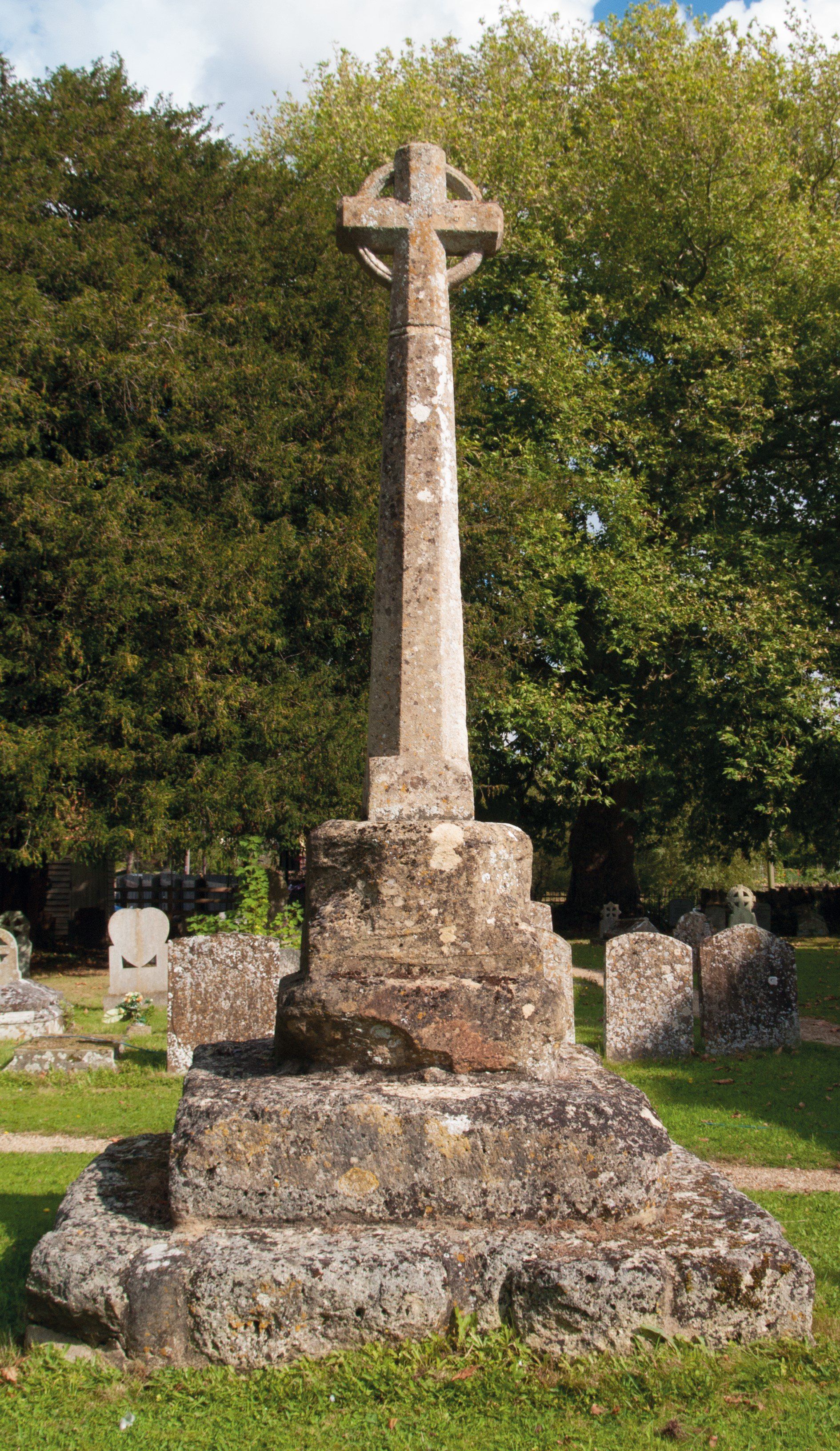The Yew Tree and the Cross
Two distinctive features of the churchyard of St Michael and All Angels church are the stone cross by the north door and the various magnificent yew trees.
One such tree, to the north-west of the church is reputed to be 1200 years old, and there is a certificate to confirm this, signed by none other than Robert Hardy and David Bellamy.
Yew trees and Churches
The association of yew trees with churches has intrigued historians for centuries and although theories abound, no definitive answer has been arrived at. We do know that in northern paganism and Roman culture, the yew had associations with death, rebirth and funeral rites. It has been suggested that these themes were adapted by the early Christian Church: the red berries and the white sap of the tree being symbols of the blood and body of Christ. Village churches such as St Michael’s were very rare before the 10th century. In fact, in the middle Saxon period, Steventon would not have been the nucleated village we now know, but scattered farmsteads and homes loosely gather in two groups, one around Sheepwash Lane, the other close to Mill Street. As there was no village priest, other arrangements were needed at this time to bring the Christian message to the people. The centres for Christianity were Minsters, homes to monks much like later monasteries, but with the duty for ministering to the residents of local settlements.

In our area, Abingdon, Marcham and Wantage had Minsters, one of which would have had Steventon within its ‘parish’. We can envisage monks visiting Steventon to preach and baptise. There is evidence that the places chosen for such ministrations were sometimes previously associated with pagan activities, it being considered more effective to build on ancient beliefs rather than confront them. Wooden crosses Ancient trees may have well have attracted pagan sympathies, and the antidote for the early Christian church was for the monk assigned to that community to place a wooden cross alongside the tree, rather than chop the tree down. Thus, the association of the yew with life and death was mirrored by the symbolism of the cross. Even with its current ripe old age, the yew in St Michael’s churchyard, would have been a mere youngster at the time of this evangelical mission to Steventon, and the nearby stone cross is younger still, dating to the later medieval period. An ideal site However, the fact that the site stands on a track leading from Wantage to the Thames, is in close proximity to water for baptism, yet is marginally raised above the nearby land, all hint at its attractiveness for early Christian practices in perhaps the 9th and 10th centuries. The site was then adopted by the local Saxon lord in the late 10th century as the site of his manor complex and private chapel, which in turn is recorded in the Domesday Book a hundred years later. Thus, we can speculate that the churchyard yew and the cross are representative of the existence of a Christian tradition in our village that dates back perhaps 1200 years or more
